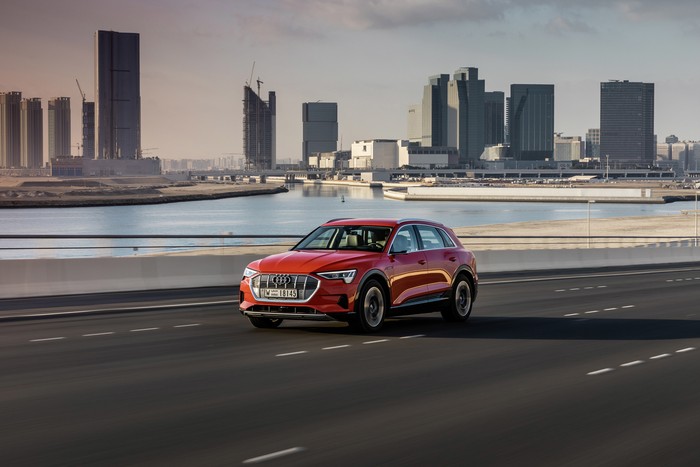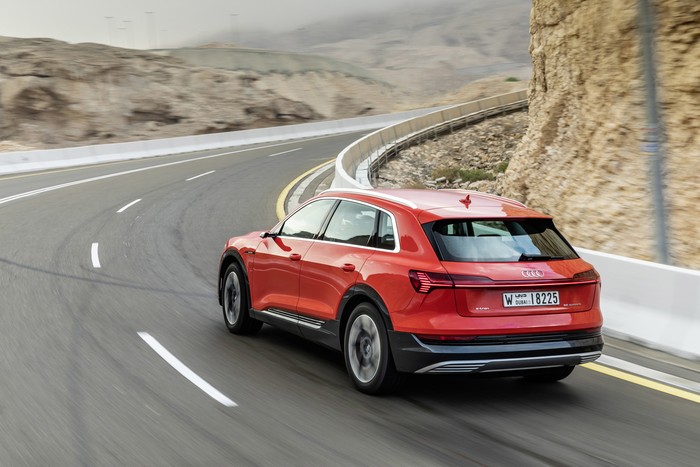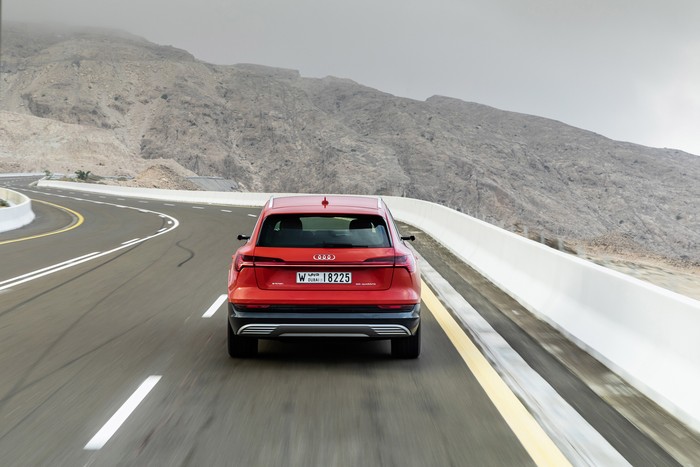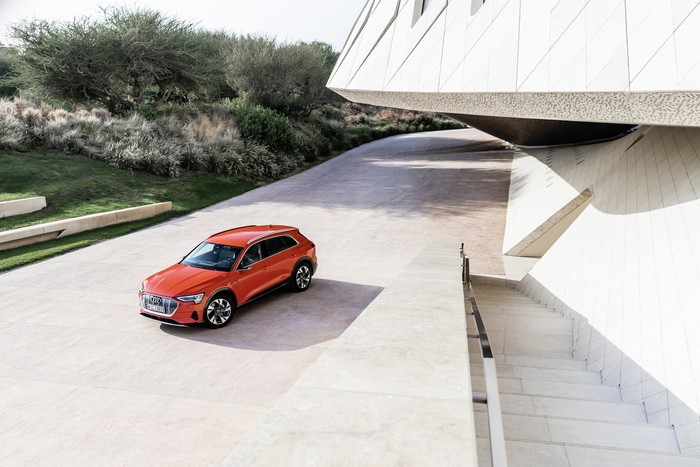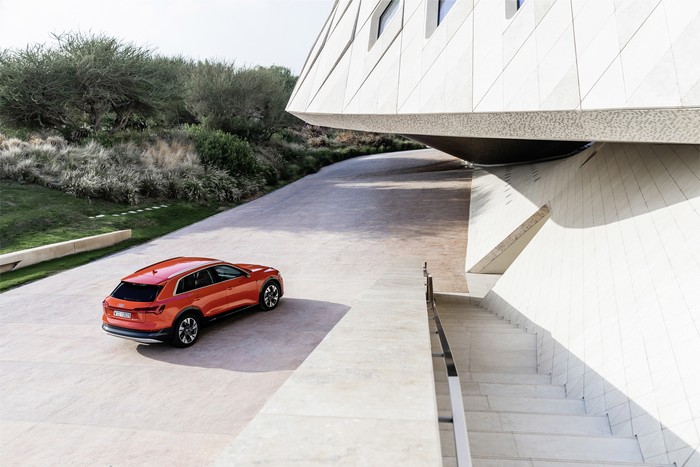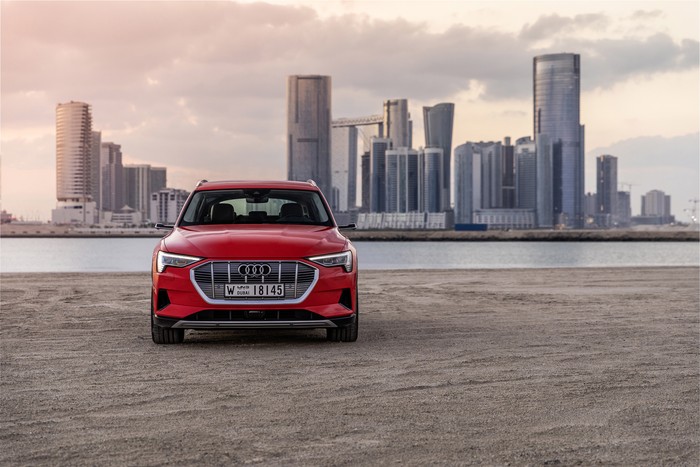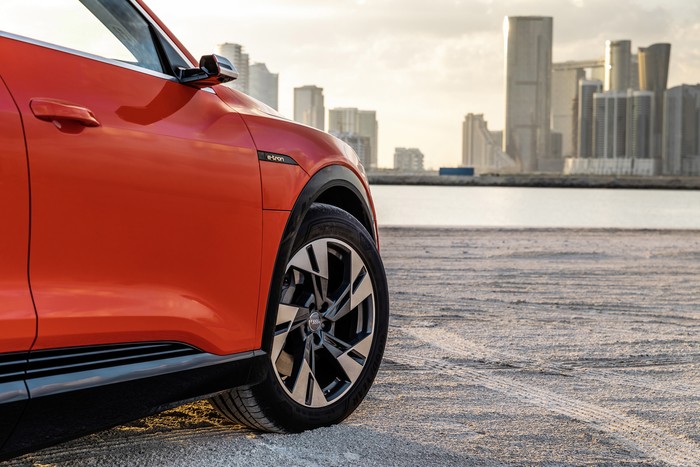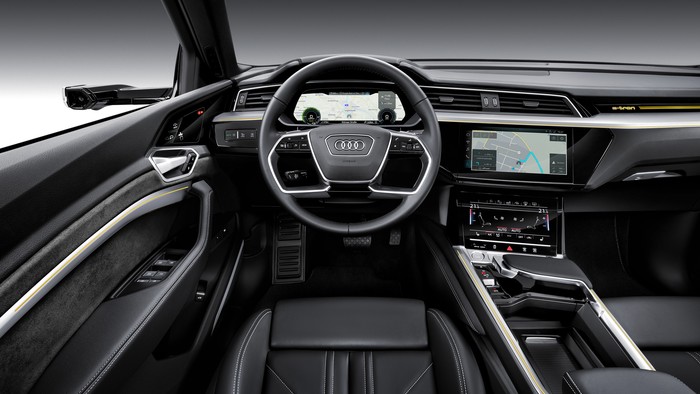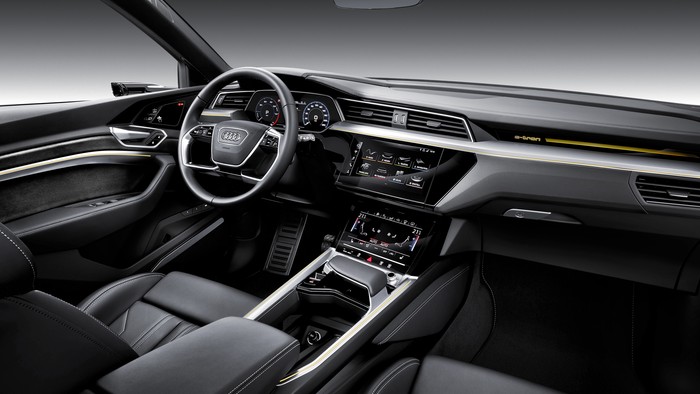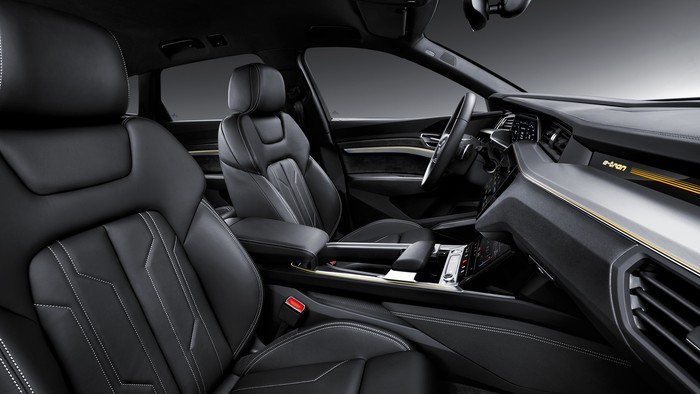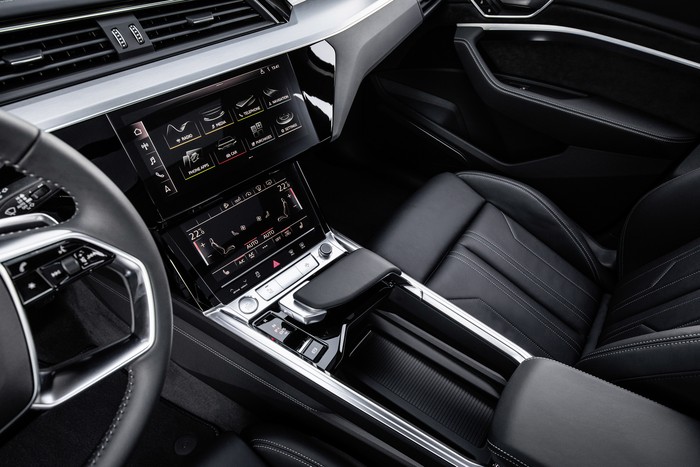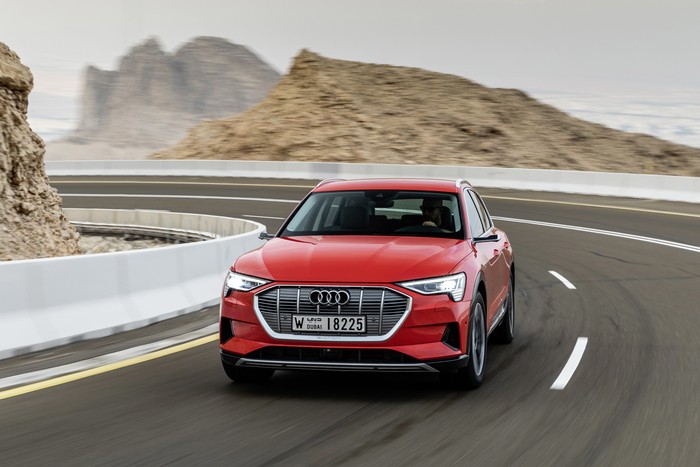
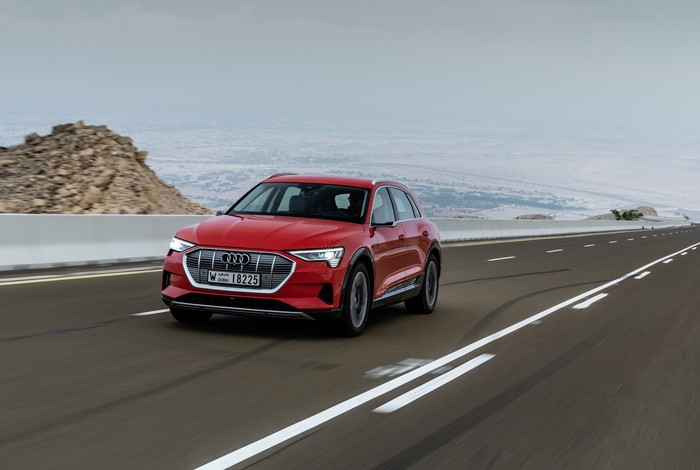
First drive: 2019 Audi E-Tron
Audi made its first EV normal; does this approach work?
The automakers who designed electric cars before they became popular all got one thing wrong: electrification is coming from the top, not from the bottom. General Motors displayed a surprising amount of foresight when it released the EV1 in 1996, but fast forward 23 years and there's nothing like it on the market. Instead, a majority of the electric vehicles available new are big, luxurious, and priced accordingly. Audi's E-Tron is the latest entry into this growing segment.
The E-Tron isn't alone. Mentioning the Tesla Model X and its falcon doors is inevitable, but the E-Tron also competes against the Jaguar I-Pace, which has been on sale for nearly a year, and the Mercedes-Benz EQC, which we drove in rainy Norway a few weeks ago but won't arrive on American soil until 2020. BMW will join the segment sooner or later with an electric variant of the X3 named iX3. The letter i no longer stands for fuel-injection; it now represents BMW's i sub-brand.
"Make it normal."
The E-Tron is one of the most important cars in Audi's history. It blazes the path that all the company's upcoming electric models will follow, and believe us, there are a lot of them in the pipeline. By 2025, the Ingolstadt-based firm hopes to offer no fewer than 12 electric models in addition to an array of electrified hybrid and hydrogen-powered cars. It all starts with this surprisingly normal-looking EV.
The I-Pace looks like it was shot to earth from an alien spaceship - we'll let you debate whether that's good or bad. The E-Tron, on the other hand, looks like... an Audi. Again, we're not here to play judge, jury, and executioner. We'll simply say that its conventional design speaks volumes about its mission. It was developed primarily for motorists who want a luxurious, spacious SUV that just happens to be electric, not for folks who want to tell their fellow commuters that they received a big tax break when they stopped giving their local Texaco station money.
Buyers have two trim levels named Premium Plus ($74,800) and Prestige ($81,800), respectively, to choose from. Those figures place the E-Tron in roughly the same ballpark as its aforementioned rivals, and in the same price bracket as a long list of high-end gasoline-powered models, including some it will share showroom space with. Note that, because the E-Tron is Audi's first commercially-available electric car, buyers will be eligible to claim the full $7,500 federal tax credit awarded to motorists who go green. Some will be eligible for local credits, too.
Big and familiar
The materials used in the cabin are nice to look at and touch, and the dashboard has a crisp, high-tech look to it. The few buttons left on the center console are right where you expect to find them, especially if you've spent any amount of time in other recently-launched Audi models, like the A7 or the A6.
The occupants travel on comfortable, well-padded seats, and they enjoy an ample amount of space. This is one of the undeniable advantages of replacing a V6 with a battery pack and a pair of electric motors. We'd even ask an average-sized adult to sit in the middle of the rear bench without feeling guilty.
The E-Tron can carry 57 cubic feet of cargo plus five passengers. In comparison, the Q5 has 53 cubes while the Q8 - Audi's flagship SUV - boasts 60.7. Pop the hood, and you'll find an 8.4-liter V10 engine borrowed from the Dodge Viper. Just kidding. Audi carved out a small but useful storage compartment that lets owners store charging cables, or smaller items like a briefcase or a camera bag.
Tech as your copilot
The E-Tron comes with a dual-screen infotainment system named MMI Touch Response. It's user-friendly, it has sharp graphics, and it responds to input immediately. If you can use a smartphone or a tablet, you'll be able to navigate Audi's infotainment system without pulling your hair out, which is impressive considering the vast amount of information packed into the software.
The top, 10.1-inch screen shows media options, navigation directions, and information about the car, such as which driving aids are turned on. The bottom, 8.6-inch screen is used to adjust the climate control system, and the passengers can also use it to manually enter an address into the navigation system thanks to handwriting recognition technology. It read our handwriting, a feat even we can't accomplish reliably. We hope you're right-handed, though; left-handers inevitably have to awkwardly lean over to reach the center console, or sit shotgun.
The E-Tron's third screen replaces the analog instrument cluster. Called Virtual Cockpit in Audi-speak, it's a driver-configurable, 12.3-inch unit that puts navigation directions, media information, and data about the car right in the driver's line of sight. We loved this feature; when we drove the E-Tron, we got directions from the Virtual Cockpit more often than from the screen on the center console.
The navigation system does more than list directions. It takes real-time traffic information into account, and it shows the available charging stations along a given route. Charging times are factored into the estimated arrival time; if you need to charge for 30 minutes to complete a three-hour trip, the software will say you're arriving in three and a half hours. It's a realistic, honest approach to driving electric.
We've experienced Virtual Cockpit in other Audi models before. The E-Tron's electric powertrain earns it additional features. For example, when it's plugged in, the screen displays the real-time charging speed and the battery's current charge. This function takes a lot of the guesswork out of living with an electric car.
If you don't want to sit in your car as the E-Tron charges, you can check the charging status using the MyAudi app. It's like a key fob on steroids that also lets users lock or unlock the car, set the climate control, schedule a charge (assuming the car is plugged in), plus turn on the heated seats, the heated rear window, and the heated steering wheel. The E-Tron is ready to roll when you are.
Smooth operator
The E-Tron's platform is essentially a big metal skateboard. Put those Emericas away; you can't use it to kick-flip. The 95-kilowatt-hour lithium-ion battery pack channels electricity to a pair of electric motors (one over each axle). There is no mechanical connection between the two axles, so an armada of sensors automatically decides how much torque each motor needs to deliver to keep the E-Tron moving and pointed in the right direction. This through-the-road all-wheel drive system is the first electric application of Audi's Quattro technology, which traces its roots back to rally cars, but it certainly won't be the last.
The powertrain delivers 360 horsepower and 413 pound-feet of torque in regular driving conditions. These figures rise to 408 and 489, respectively, when a temporary overboost function kicks in. It helps the E-Tron overcome its roughly 5,500-pound weight to hit 60 mph from a stop in 5.7 seconds.
5.7 seconds. We know: Tesla has Ludicrous Mode. Here again, the focus was on making the E-Tron a normal car for normal motorists who don't need a sub-three-second sprint to 60. It needed to feel like an Audi, not like a German attempt at making a Tesla. It's more Q7 than Model X, and it's better for it.
We expect a quiet cabin from an Audi, but the E-Tron takes it to the next level, even for an electric car. We were able to use indoor voices while cruising at highway speeds. Road noise is slightly more present than in the Q7 because there's no engine noise to cover it up, but it's not annoying, alarming, or overly loud. And, because the E-Tron doesn't have a conventional, multi-gear transmission, it builds up speed in a very linear manner. Smooth, brisk, and nearly silent, it feels almost as refined as an A8. Audi notably resisted the urge to pipe noise through the speakers, like Jaguar did with the I-Pace - it sounds like a spaceship in some driving modes, which is entertaining at first but quickly becomes a little bit gimmicky, like something you'd hear on a Cartoon Network show that takes place in the future.
The air suspension tilts more towards comfort than sport, but the big battery pack helps keep body lean in check by lowering the center of gravity. We had fun behind the wheel when the road loosened up; this bodes well for the Audi Sport-developed production version of the E-Tron GT concept shown in 2018.
On paper, most braking systems are created equal. The E-Tron's is unusual. When you press the pedal, you're sending a signal to a control unit that distributes the brake force electronically - assuming the hydraulic system's input is needed. Sometimes, the pads stay right where they are, and the brake energy recuperation system channels electricity back to the pack while slowing down the car. The E-Tron's brain decides the best way to slow down on its own, without input required from the driver. Audi installed a simulator to preserve natural brake feel, so the pedal always feels the same. This technology fixes one of the bigger issues we've found with electric and plug-in hybrid cars in the past. However, we wish Audi would have programmed a more aggressive regeneration mode. One-pedal driving - which became a second nature when we drove the I-Pace - is not possible in the E-Tron.
The E-Tron's driving range checks in at 204 miles. Audi explained it could have squeezed out more from the battery pack, but it stopped there to preserve its life. Its engineers sought maximum longevity, not maximum range. They were able to do this because the company's research suggests E-Tron owners will charge at home about 85 percent of the time, so they'll often leave their house with a full charge that they won't fully deplete during their commute. However, if you're hitting the road, you'll appreciate that the E-Tron is the first volume-produced electric car compatible with 150-kilowatt charging, which zaps the battery with an 80-percent charge (163 miles) in half an hour. Plugging in for 10 minutes adds 54 miles.
Leftlane's bottom line
For once, you can reliably judge a book by its cover. The E-Tron looks like an Audi, it feels like one, and it drives like one, except it's powered by electricity instead of gasoline. It's the most normal car in its segment, an approach we think will pay off when the initial novelty of EVs wears off.
